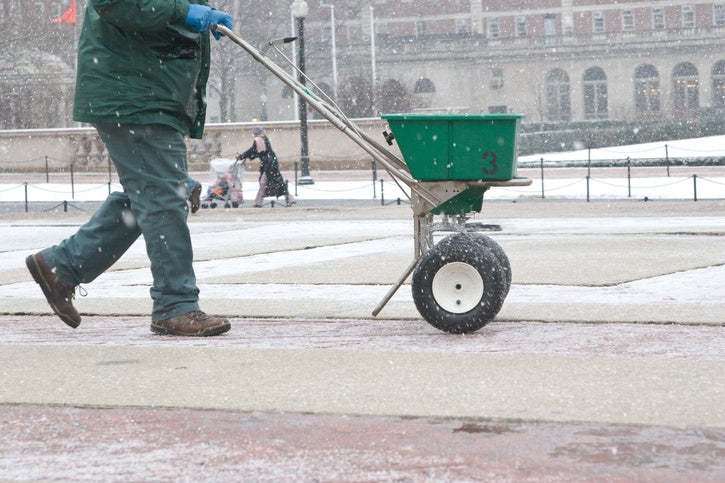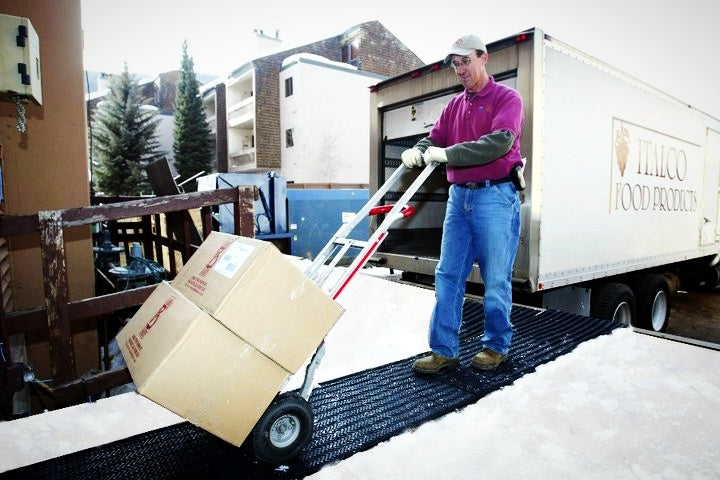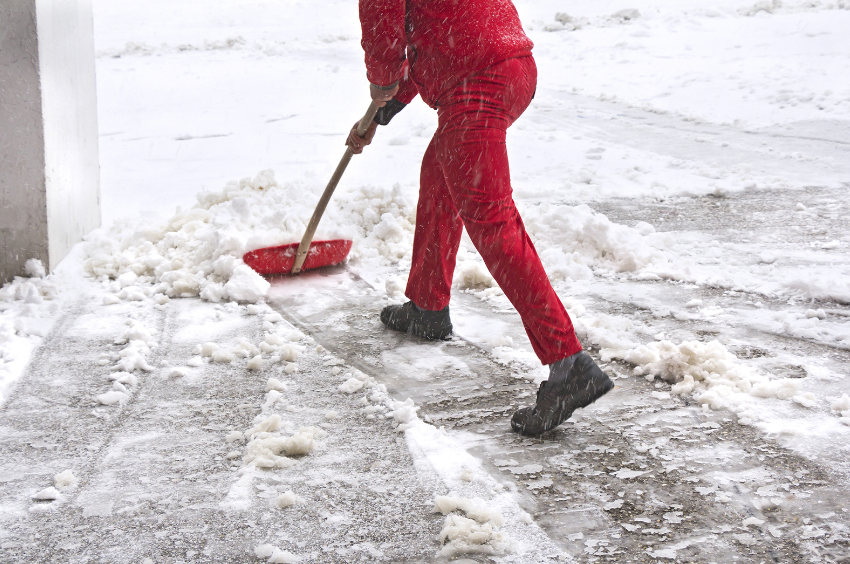
Facility managers must invest significant time and resources into snow and ice removal efforts every winter, but one way to minimize costs and to speed up the commercial snow removal process is by pretreating surfaces with anti-icing products. Rock salt and other granular de-icing agents are generally not preferred for preventative treatment since liquid applicants are superior for this purpose. Here are some overall benefits and best practices for pretreating your facility for the winter months.
The Benefits of Snow and Ice Pretreatment
By utilizing anti-icing chemicals prior to an expected storm, you can prevent precipitation from forming black ice or frost. You will also retain traction on sidewalks and driving lanes longer after the storm begins, though this will still be a short-lived benefit. Pretreatment, however, will be ineffective if the storm begins with rainfall, since the chemicals would simply be washed away, so it is crucial to pay close attention to local forecasts.
Liquid anti-icing formulas are especially fit for snow and ice pretreatment because they better coat the whole pavement surface, evaporate, and leave behind highly concentrated ice-melting particles. They also bond better to surfaces, while keeping snow and ice from bonding together. This causes snow to begin melting as soon as it falls and makes it easier to shovel it away later on.
It is also possible to treat pavements immediately after snow begins to fall, or as soon as temperatures start diving toward freezing, and get much the same effect. Early-storm treatments can be effective even when there is a thin layer of snow or slush, but too much precipitation present will dilute the active chemicals in the anti-icing agent and render it ineffective.
Types of Liquid Anti-icers
The most-used anti-icing option for 100 years, and still the least expensive one, is sodium chloride (rock salt). To gain the edge that liquids have as anti-icers, rock-salt brines are sometimes used, but this does not avoid the concrete erosion, steel corrosion, and landscaping damage that this chemical can do. Five of the most commonly used alternatives to rock-salt brine are liquids made of the following chemicals:
- Calcium chloride, which will melt snow at sub-zero temperatures- something that cannot be said of sodium chloride. It must, however, be stored in metal or plastic bins with tight-fitting lids since it is prone to absorb water.
- Magnesium chloride, which is especially safe to use near turf, flower beds, or other areas where you want plant life to grow next spring. It must not be poured on too heavy, however, since it may then become somewhat slippery.
- Potassium chloride, a good melting agent that is chemically similar to certain fertilizers and will not hurt vegetation, soil, or ground water.
- Calcium-magnesium acetate, which is rather weak on melting power but does not corrode concrete and metal the way many de-icers do. It is no more corrosive than tap water and is effective down to -18°F (-28°C).
- Potassium acetate, which is also less harmful to soils and far less corrosive than rock salt. It is biodegradable and best to apply before rather than immediately following a snowfall.
Mats as a Pre-Storm Option
Heated floor mats, which consist of a central heating element sandwiched between two pieces of heavy-duty rubber, are another option for keeping walkways clear at the onset of a winter storm. They can be strategically positioned at entryways, on outdoor stairways, and along heavy-traffic sidewalks. They are fully grounded, can be left out all season long, and can melt snow as fast as two inches (5 cm) per hour.
Taking action before you even face heavy winter precipitation can greatly shrink the time during which a facility is inaccessible or in less than ideal conditions. Liquid anti-icers outperform granular ones like rock salt, and snow-melting mats can melt snow fast on your most-traveled pathways.


